Top Supply Chain Management Software Comparison
By Amanda Reyes | Published: Not Applicable | Category: Supply Chain Management Software
About Supply Chain Management Software
Supply chain management software helps organizations manage the flow of goods, data, and finances related to a product or service, from procurement of raw materials to delivery of the product at its final destination. It aims to streamline logistics, optimize inventory, improve supplier collaboration, and enhance overall operational efficiency.
Scoring Criteria
- → Functionality Depth
- → Ease of Use
- → Integration Capabilities
- → Scalability
- → Customer Support
- → Pricing/Value
The Best Supply Chain Management Software
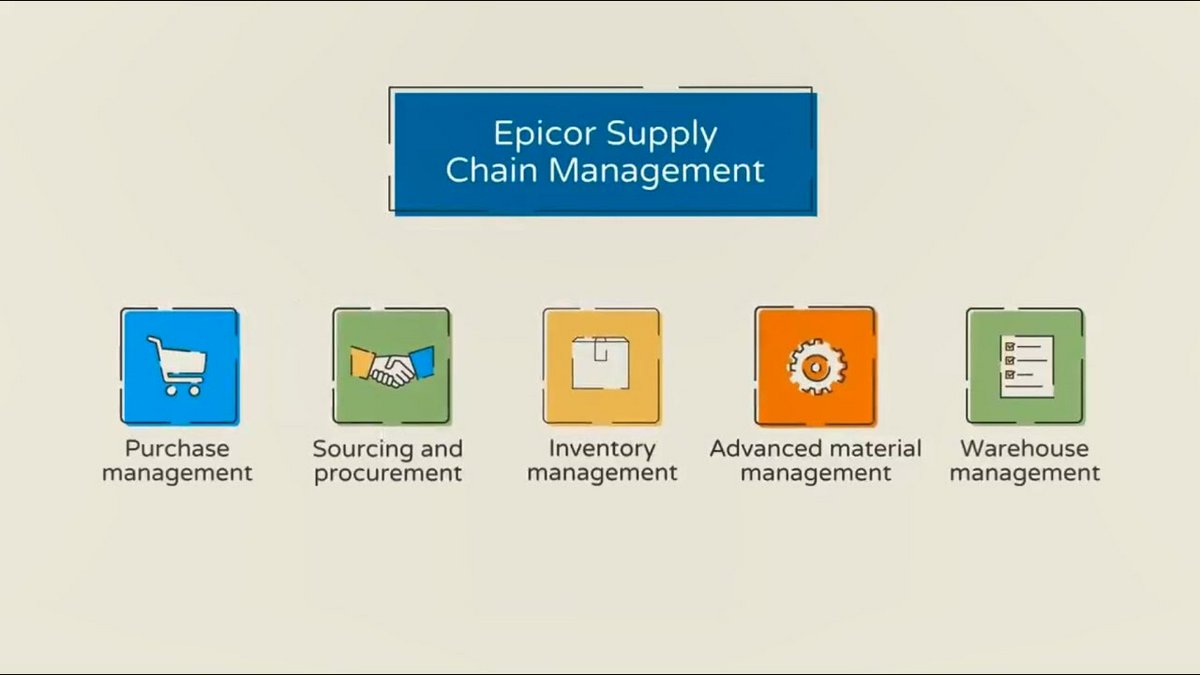 #10
#10
Epicor SCM
By Epicor
SCM module integrated within the Epicor ERP system, tailored primarily for mid-market manufacturers and distributors.
Platforms & Use Cases
Platforms: Cloud, On-premise, Web-based
Best For: Inventory Management, Warehouse Management (WMS), Supplier Relationship Management (SRM), Purchase Management, Demand Planning, Order Management
Key Features
- ✓Integrated Inventory Management: Real-time tracking and control of inventory levels and costs.
- ✓Warehouse Management System: Streamlines warehouse operations including receiving, putaway, picking, and shipping.
- ✓Procurement Management: Automates purchase order processing and supplier management.
- ✓Demand Management: Tools for forecasting and managing customer demand.
Scorecard (Overall: 7.2 / 10.0)
Pricing
Modular Licensing/Subscription
Contact Vendor
- Tight integration with Epicor ERP
- Strong focus on manufacturing and distribution needs
- Scalable for mid-market companies
Limitations: Less comprehensive than top-tier standalone SCM suites, Best suited for existing Epicor ERP customers
Pros
- + Well-integrated with Epicor's manufacturing-focused ERP
- + Good fit for mid-market manufacturers and distributors
- + Offers core SCM functionalities needed by its target market
- + Flexible deployment options (Cloud/On-premise)
Cons
- - SCM capabilities may not be as deep as dedicated SCM leaders
- - Limited appeal outside the Epicor ecosystem
- - Advanced planning/optimization might require add-ons
Verdict
"A solid SCM solution for mid-market manufacturers and distributors already using or considering Epicor ERP, providing essential integrated capabilities."
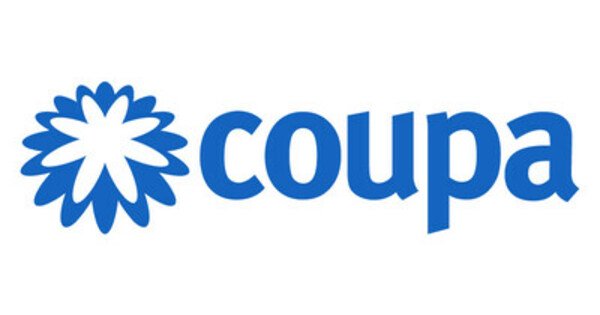 #9
#9
Coupa Supply Chain Design & Planning
By Coupa (via acquisition of LLamasoft)
Focuses on strategic supply chain design and planning, using modeling and analytics to optimize network structure, inventory, and transportation.
Platforms & Use Cases
Platforms: Cloud, Desktop (historically), Web-based
Best For: Network Design, Inventory Optimization, Transportation Optimization, Production Footprint Analysis, Risk Analysis, Demand Modeling
Key Features
- ✓Supply Chain Modeling: Build digital twins of the supply chain for analysis and optimization.
- ✓Scenario Analysis: Evaluate impacts of changes in demand, costs, policies, or disruptions.
- ✓Inventory Optimization: Determine optimal inventory levels across the network using advanced algorithms.
- ✓Transportation Routing Optimization: Optimize routes, modes, and carrier selection.
Scorecard (Overall: 7.7 / 10.0)
Pricing
Subscription
Contact Vendor
- Powerful modeling and optimization engine
- Strong focus on strategic design
- AI/ML capabilities for prescriptive insights
Limitations: Less focused on operational execution (WMS/TMS), Integration into broader Coupa BSM platform is ongoing
Pros
- + Best-in-class supply chain design and modeling capabilities
- + Powerful optimization algorithms
- + Strong analytical focus for strategic decisions
- + Enables robust risk and scenario planning
Cons
- - Historically a standalone tool, integration with operational SCM can vary
- - Requires specialized analytical skills
- - Primarily focused on planning and design
Verdict
"Excellent choice for organizations needing sophisticated supply chain modeling, design, and strategic planning capabilities, often used alongside operational SCM systems."
 #8
#8
E2open
By E2open
Networked cloud platform providing end-to-end supply chain orchestration, covering planning, visibility, and execution across partners.
Platforms & Use Cases
Platforms: Cloud, Web-based
Best For: Demand Sensing, Supply Planning, Global Trade Management, Transportation Management, Channel Shaping, Supply Chain Visibility
Key Features
- ✓Connected Supply Chain Platform: Unifies data and processes across the extended supply chain network.
- ✓AI-Powered Applications: Leverages AI for improved forecasting, planning, and decision-making.
- ✓Global Trade Management: Manages compliance, customs filings, and trade agreements.
- ✓Multi-Enterprise Network: Connects trading partners for real-time collaboration and visibility.
Scorecard (Overall: 7.5 / 10.0)
Pricing
Subscription
Contact Vendor
- Broad end-to-end capabilities
- Strong network platform
- AI integration
Limitations: Acquired multiple companies, potential for integration inconsistencies, Complexity in configuration
Pros
- + Comprehensive suite covering many SCM aspects
- + Large existing network of partners
- + Strong in global trade management
- + Leverages AI across applications
Cons
- - Platform complexity due to acquisitions
- - User interface consistency can vary
- - Implementation can be resource-intensive
Verdict
"A robust platform for large enterprises needing broad SCM functionality and network connectivity, especially strong in demand sensing and global trade."
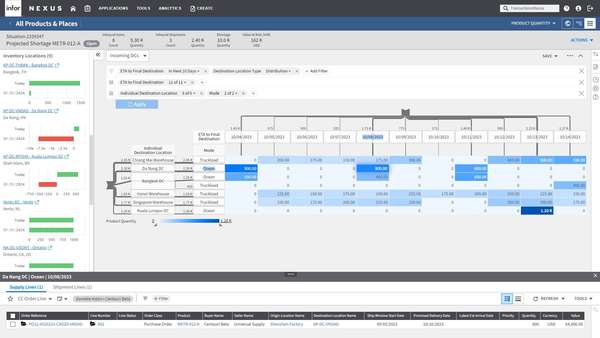 #7
#7
Infor Nexus
By Infor
Cloud-based network platform focusing on supply chain visibility, collaboration, and finance across multiple enterprises.
Platforms & Use Cases
Platforms: Cloud, Web-based, Mobile
Best For: Global Supply Chain Visibility, Supplier Collaboration, Procure-to-Pay Automation, Transportation Management, Supply Chain Finance
Key Features
- ✓Single Network Platform: Connects buyers, suppliers, carriers, and financial institutions.
- ✓End-to-End Visibility: Real-time tracking of orders, shipments, and inventory across the network.
- ✓Supply Chain Finance: Integrates financial services like payables financing and receivables financing.
- ✓Collaboration Tools: Facilitates communication and document sharing among partners.
Scorecard (Overall: 7.8 / 10.0)
Pricing
Network Subscription
Contact Vendor
- Strong multi-enterprise network capabilities
- Focus on visibility and collaboration
- Integrated supply chain finance
Limitations: May require broader adoption across supply chain partners for maximum value, Less focused on internal planning/execution than ERP-centric suites
Pros
- + Excellent multi-enterprise visibility and collaboration
- + Strong network effect
- + Integrated supply chain finance options
- + Good for complex global supply chains
Cons
- - Value depends heavily on network participation
- - Less emphasis on internal manufacturing or detailed WMS capabilities compared to others
- - Can be complex to onboard entire network
Verdict
"A leading platform for organizations needing extensive visibility and collaboration across their external supply chain network, particularly strong in global trade."
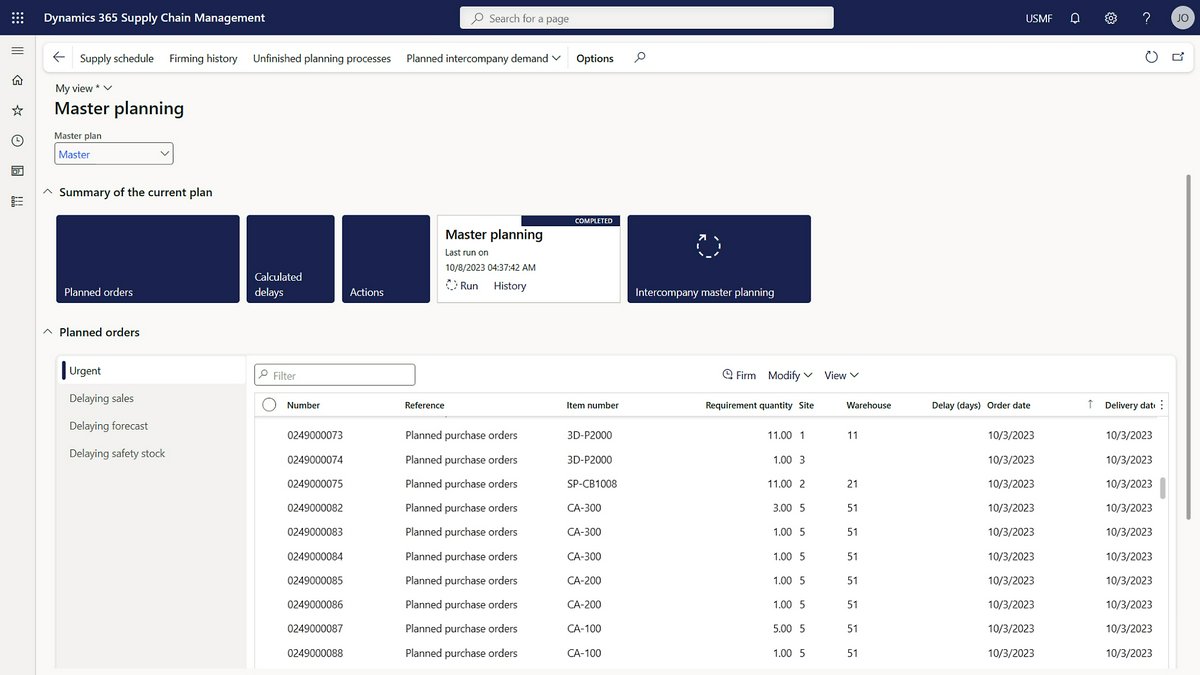 #6
#6
Microsoft Dynamics 365 Supply Chain Management
By Microsoft
Integrated ERP and SCM solution offering capabilities across planning, operations, warehouse, and transportation management within the Dynamics 365 ecosystem.
Platforms & Use Cases
Platforms: Cloud, Web-based, Mobile
Best For: Unified Operations, Production Control, Warehouse Management, Transportation Management, Asset Management, Planning Optimization
Key Features
- ✓Planning Optimization Add-in: Near real-time master planning based on operational data.
- ✓Integrated Warehouse Management: Manages warehouse processes from receiving to shipping.
- ✓Transportation Management: Handles freight rating, routing, and load planning.
- ✓Asset Management: Tracks and maintains company assets to maximize lifespan and reduce downtime.
Scorecard (Overall: 8.0 / 10.0)
Pricing
Base License
$180.00 / Per User Per Month
- Core SCM functionalities
- Integration with other D365 apps
Limitations: Full potential requires multiple D365 modules
Attach License
$30.00 / Per User Per Month
- Lower cost for users needing access but not primary SCM functions
Limitations: Requires a qualifying base license
Pros
- + Strong integration within the Microsoft ecosystem (Office 365, Power Platform)
- + Unified ERP and SCM capabilities
- + Relatively modern interface
- + Competitive pricing compared to top-tier rivals
Cons
- - Functionality depth may not match specialized best-of-breed solutions in all areas
- - Can become complex with customizations
- - Relies heavily on partner network for implementation
Verdict
"A strong contender for organizations invested in the Microsoft ecosystem, offering a well-integrated ERP/SCM solution with good value."
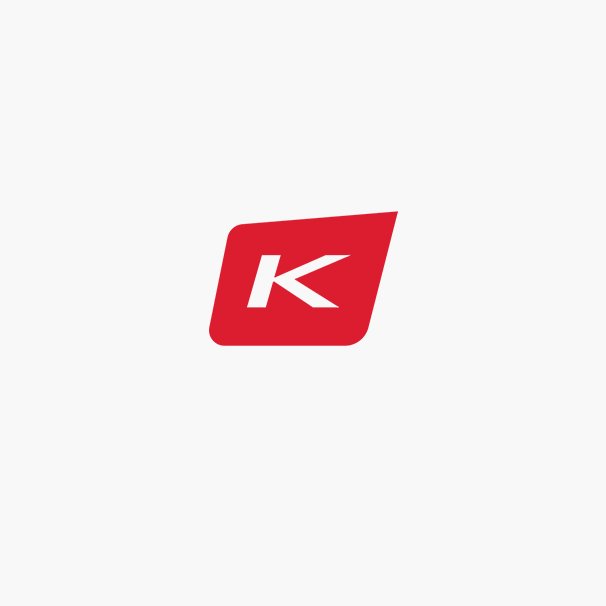 #5
#5
Kinaxis
By Kinaxis
Cloud-based platform specializing in concurrent planning, enabling synchronized decision-making across demand, supply, inventory, and operations.
Platforms & Use Cases
Platforms: Cloud, Web-based
Best For: Concurrent Planning, Demand Planning, Supply Planning, Inventory Optimization, Sales & Operations Planning (S&OP), Supply Chain Visibility
Key Features
- ✓RapidResponse Platform: Core platform enabling concurrent planning across functions.
- ✓Concurrent Planning Engine: Allows 'what-if' scenario modeling impacting the entire supply chain simultaneously.
- ✓Application Suites: Modules for Demand Planning, Supply Planning, S&OP, Inventory Management, etc.
- ✓Control Tower: Provides end-to-end visibility and collaborative decision support.
Scorecard (Overall: 8.1 / 10.0)
Pricing
Subscription
Contact Vendor
- Unique concurrent planning approach
- Strong scenario analysis
- Scalable cloud architecture
Limitations: Primarily focused on planning; execution modules may be less comprehensive than specialists, Premium pricing
Pros
- + Unique and powerful concurrent planning methodology
- + Excellent 'what-if' scenario capabilities
- + Strong focus on S&OP and integrated planning
- + Modern cloud platform
Cons
- - Less focus on deep execution systems (WMS/TMS) compared to some competitors
- - Can be expensive
- - May require process changes to fully leverage concurrent planning
Verdict
"Ideal for large organizations seeking advanced, integrated planning capabilities and robust scenario modeling, particularly strong in S&OP."
 #4
#4
Manhattan Associates
By Manhattan Associates
Specializes in supply chain execution systems, particularly Warehouse Management (WMS) and Transportation Management (TMS), with growing planning capabilities.
Platforms & Use Cases
Platforms: Cloud, On-premise, Web-based
Best For: Warehouse Management, Transportation Management, Labor Management, Order Management, Yard Management, Supply Chain Visibility
Key Features
- ✓Manhattan Active WM: Cloud-native WMS offering scalability and flexibility.
- ✓Manhattan Active TM: Comprehensive TMS for optimizing logistics operations.
- ✓Manhattan Active Omni: Unified platform for order management and fulfillment across channels.
- ✓Supply Chain Convergence: Integrating planning, execution, and visibility.
Scorecard (Overall: 7.9 / 10.0)
Pricing
Quote-Based Subscription/License
Contact Vendor
- Leading WMS/TMS solutions
- Cloud-native 'Active' platform
- Strong retail and distribution focus
Limitations: Historically focused more on execution than planning, Can be costly
Pros
- + Market leader in WMS
- + Robust TMS capabilities
- + Modern cloud-native 'Active' platform
- + Strong support for complex distribution environments
Cons
- - Planning capabilities are less mature than leaders
- - Primarily focused on execution systems
- - Implementation can be complex
Verdict
"Excellent choice for organizations prioritizing advanced warehouse and transportation management, particularly within retail and distribution sectors."
 #3
#3
Blue Yonder (formerly JDA)
By Blue Yonder
End-to-end platform focused on supply chain planning, retail planning, and logistics, leveraging AI/ML for optimization.
Platforms & Use Cases
Platforms: Cloud, Web-based
Best For: Demand Planning, Supply Planning, Warehouse Management, Transportation Management, Retail Category Management, Order Fulfillment
Key Features
- ✓Luminate Platform: AI-driven platform providing predictive insights and prescriptive recommendations.
- ✓Warehouse Management System (WMS): Industry-leading WMS for complex distribution operations.
- ✓Transportation Management System (TMS): Comprehensive logistics planning and execution.
- ✓Demand and Supply Planning: Advanced algorithms for forecasting and inventory optimization.
Scorecard (Overall: 8.0 / 10.0)
Pricing
Quote-Based Subscription
Contact Vendor
- Modular solution approach
- AI/ML capabilities
- Strong retail and manufacturing focus
Limitations: Complex pricing structure, Implementation requires expertise
Pros
- + Leading capabilities in WMS and TMS
- + Strong focus on AI/ML for optimization
- + Deep industry expertise, especially in retail and manufacturing
- + End-to-end platform vision
Cons
- - User interface can vary across modules
- - Complexity can lead to long implementation times
- - Premium pricing
Verdict
"A top choice for companies needing best-in-class WMS or TMS, particularly in retail/manufacturing, with powerful AI-driven planning capabilities."
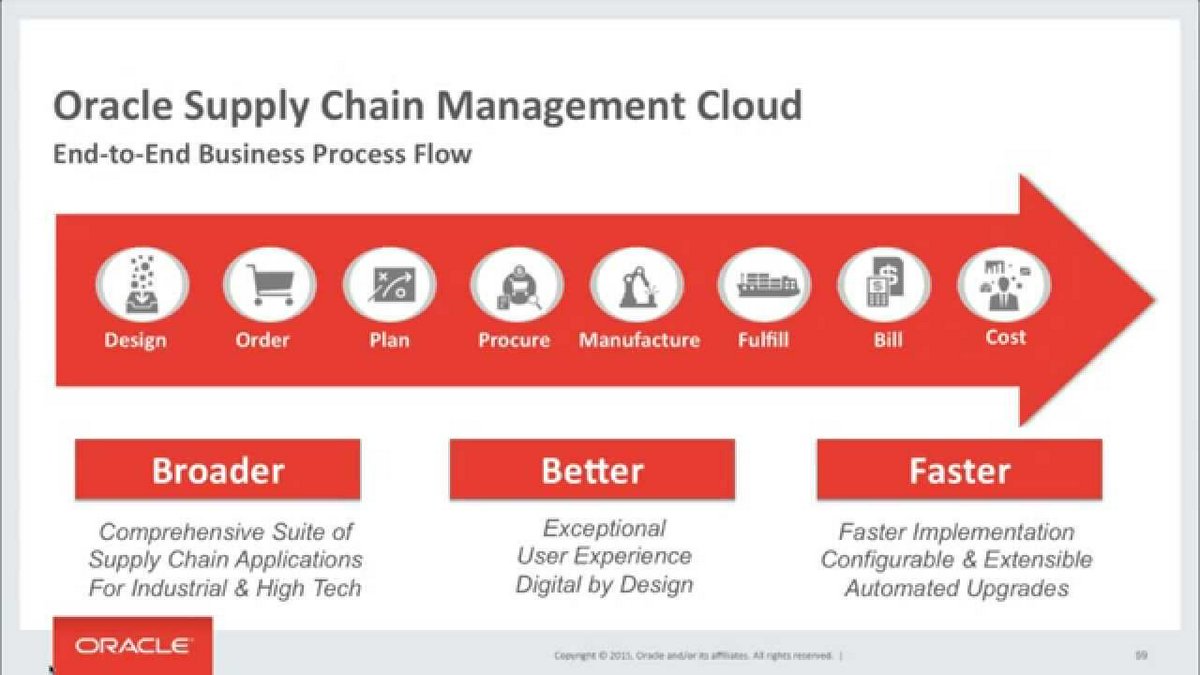 #2
#2
Oracle SCM Cloud
By Oracle
Cloud-based suite offering end-to-end supply chain visibility, planning, and execution capabilities, integrated with Oracle Cloud applications.
Platforms & Use Cases
Platforms: Cloud, Web-based, Mobile
Best For: Supply Chain Planning, Inventory Management, Order Management, Logistics, Procurement, Product Lifecycle Management
Key Features
- ✓Supply Chain Planning Cloud: Utilizes AI/ML for demand forecasting, supply planning, and replenishment.
- ✓Inventory Management Cloud: Real-time visibility and control over global inventory levels and movements.
- ✓Transportation Management Cloud: Manages transportation planning, execution, and settlement.
- ✓Order Management Cloud: Centralizes order capture and fulfillment across multiple channels.
Scorecard (Overall: 8.2 / 10.0)
Pricing
Modular Subscription
Contact Vendor
- Access based on subscribed modules
- Built-in analytics and reporting
- Regular updates
Limitations: Pricing complexity based on modules and usage, Integration outside Oracle ecosystem may require effort
Pros
- + Comprehensive cloud-native suite
- + Strong analytics and AI capabilities
- + Seamless integration with other Oracle Cloud products
- + Modern user interface
Cons
- - Can be expensive
- - Best suited for organizations committed to the Oracle stack
- - Implementation can still be complex
Verdict
"A powerful cloud SCM solution, particularly strong for companies using Oracle ERP, offering modern features and robust planning."
View Top Ranked Software
Watch a short ad to unlock the details for the #1 ranked software.
 #1
#1
SAP SCM
By SAP
Comprehensive suite covering planning, logistics, manufacturing, and asset management, integrated with SAP's ERP ecosystem.
Platforms & Use Cases
Platforms: Cloud, On-premise, Web-based
Best For: Demand Planning, Supply Network Planning, Production Planning, Transportation Management, Warehouse Management, Supplier Collaboration
Key Features
- ✓Integrated Business Planning (IBP): Connects planning processes across sales, operations, and finance for unified decision-making.
- ✓Extended Warehouse Management (EWM): Advanced control over warehouse operations, including inbound/outbound processing and inventory tracking.
- ✓Transportation Management (TM): Optimizes freight, fleet, and logistics management.
- ✓Supply Chain Collaboration: Tools for engaging and managing relationships with suppliers and partners.
Scorecard (Overall: 8.4 / 10.0)
Pricing
Quote-Based
Contact Vendor
- Full suite access dependent on modules licensed
- Integration with SAP ERP
- Advanced analytics
Limitations: Complexity can be high, Pricing typically requires significant investment
Pros
- + Extremely comprehensive feature set
- + Strong integration within the SAP ecosystem
- + Highly scalable for large enterprises
- + Robust planning and execution capabilities
Cons
- - Can be complex to implement and manage
- - High total cost of ownership
- - User interface can feel dated in some modules
Verdict
"A market leader ideal for large, complex global organizations already invested in the SAP ecosystem, offering unparalleled depth but requiring significant resources."

Final Thoughts
The Supply Chain Management software landscape is dominated by comprehensive suites from major enterprise vendors like SAP and Oracle, offering deep functionality but often accompanied by complexity and cost. Specialized players like Blue Yonder and Manhattan Associates excel in execution areas like WMS and TMS, while Kinaxis offers unique concurrent planning capabilities. Integrated ERP/SCM options from Microsoft and Epicor provide value, particularly for mid-market companies or those invested in their respective ecosystems. Network platforms like Infor Nexus and E2open focus on multi-enterprise visibility and collaboration.